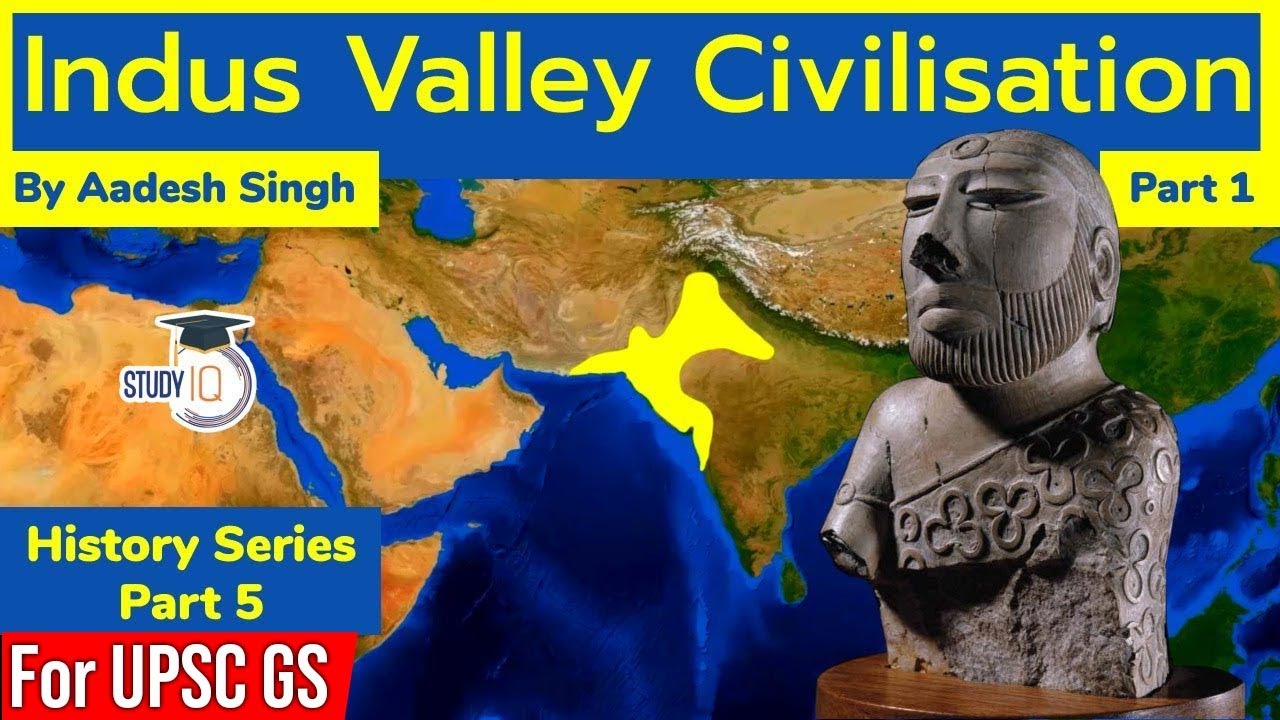PERADABAN SUNGAI INDUS : Mahenjo Daro dan Harappa
Summary
TLDRThe video explores the ancient Indus Valley civilization, highlighting the advanced urban planning of its cities, Mohenjo-Daro and Harappa. Established around 2800 BCE, this civilization thrived through sophisticated agricultural practices and an intricate drainage system that prevented flooding. Their cities featured grid-like layouts, public buildings, and homes equipped with ventilation, indicating a high standard of living. The absence of a rigid caste system is suggested as a factor in their progress. However, by 1810 CE, these cities were abandoned due to various disasters, including flooding and invasions, leading to the decline of this remarkable civilization.
Takeaways
- 🏛️ Ancient India is often associated with figures like Emperor Ashoka and epic tales like the Mahabharata, but its history starts much earlier with the Indus Valley Civilization.
- 🏙️ The Indus Valley Civilization thrived between 2800 BCE and 1810 BCE, centered around the cities of Mohenjo-Daro and Harappa.
- 🌾 The inhabitants of the Indus Valley excelled in agriculture, effectively utilizing local resources and developing advanced irrigation systems.
- 🛠️ The cities showcased remarkable urban planning, featuring a grid-like layout with organized streets, public buildings, and sophisticated drainage systems.
- 💧 Their advanced drainage systems included vertical pipes and covered sewers, reflecting a strong understanding of water management.
- 📏 Evidence of standardized weights, measures, and seals indicates a highly organized and trade-oriented society.
- 🔧 The civilization was proficient in metalworking, utilizing materials like copper, bronze, and tin.
- 👥 The societal structure appeared egalitarian, lacking a rigid caste system, which may have contributed to its rapid advancements.
- 📉 By around 1910 BCE, the population began to decline as people migrated to smaller villages in the Himalayas.
- ⚠️ The decline of the Indus Valley Civilization was influenced by natural disasters, deforestation, and invasions, likely by Aryan tribes.
Q & A
What is the time frame of the Indus Valley Civilization?
-The Indus Valley Civilization thrived from around 2800 BCE to 1810 BCE.
Which major cities were central to the Indus Valley Civilization?
-The major cities central to the Indus Valley Civilization were Mohenjo-Daro and Harappa.
Who were the primary inhabitants of the Indus Valley?
-The primary inhabitants were the Dravidians, an indigenous group of India.
What were the key features of urban planning in Mohenjo-Daro and Harappa?
-Key features included a grid layout for streets, advanced drainage systems, and public buildings for communal use.
How did the people of the Indus Valley manage water resources?
-They developed a sophisticated drainage system that effectively managed waste and prevented flooding during monsoons.
What role did agriculture play in the Indus Valley Civilization?
-Agriculture was the primary occupation, and the people efficiently utilized the fertile land of the Indus Valley for crop production.
What technological advancements did the Indus Valley people achieve?
-They developed standardized weights and measures, intricate seals, and metallurgy techniques for smelting copper, bronze, and tin.
Was there a caste system in the Indus Valley Civilization?
-There is no evidence of a caste system in the Indus Valley Civilization, which may have facilitated its rapid development.
What factors contributed to the decline of the Indus Valley Civilization?
-Factors included natural disasters, deforestation, soil erosion, and invasions by foreign tribes, particularly the Aryans.
What legacy did the Indus Valley Civilization leave behind?
-The civilization left a significant legacy in urban planning, agricultural practices, and technological innovation, influencing future cultures in the region.
Outlines

Этот раздел доступен только подписчикам платных тарифов. Пожалуйста, перейдите на платный тариф для доступа.
Перейти на платный тарифMindmap

Этот раздел доступен только подписчикам платных тарифов. Пожалуйста, перейдите на платный тариф для доступа.
Перейти на платный тарифKeywords

Этот раздел доступен только подписчикам платных тарифов. Пожалуйста, перейдите на платный тариф для доступа.
Перейти на платный тарифHighlights

Этот раздел доступен только подписчикам платных тарифов. Пожалуйста, перейдите на платный тариф для доступа.
Перейти на платный тарифTranscripts

Этот раздел доступен только подписчикам платных тарифов. Пожалуйста, перейдите на платный тариф для доступа.
Перейти на платный тарифПосмотреть больше похожих видео

Rise and Fall of Indus Valley Civilization

Indus Valley Civilization Part 1 - Ancient India History for UPSC | Harappa Civilization

Documentary # 16: Indus Valley Civilization | A Short Documentary

Peradaban India Kuno di Lembah Sungai Indus. Kota Mohenjodaro dan Harappa Sudah Maju Bangett!!

Mohenjo Daro 101 | National Geographic

Peradaban Lembah Sungai Indus dan Lembah Sungai Kuning
5.0 / 5 (0 votes)
